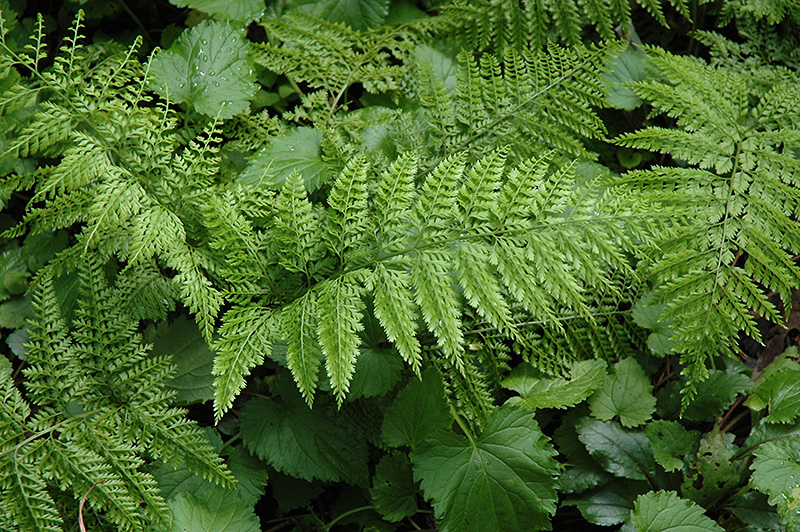|
|
|
| home | about us | loyalty program | products | directions | warranty | garden splendor ® | plant collector | landscaping | |
| Plant Finder | |
|
Height: 3 feet Spread: 3 feet
Sunlight:
Hardiness Zone: 4a Description: A lovely evergreen fern, this variety has tapering ladder like leaves that seem to turn over at the top exposing the pinnules; excellent massed or as groundcover in shaded borders or featured in shady areas of rock gardens Ornamental Features Upside Down Fern is primarily valued in the garden for its cascading habit of growth. Its attractive ferny compound leaves emerge light green in spring, turning forest green in color the rest of the year. Landscape Attributes Upside Down Fern is an herbaceous evergreen fern with a shapely form and gracefully arching fronds. Its relatively fine texture sets it apart from other garden plants with less refined foliage. This is a relatively low maintenance plant, and is best cleaned up in early spring before it resumes active growth for the season. Deer don't particularly care for this plant and will usually leave it alone in favor of tastier treats. It has no significant negative characteristics. Upside Down Fern is recommended for the following landscape applications;
Planting & Growing Upside Down Fern will grow to be about 3 feet tall at maturity, with a spread of 3 feet. Its foliage tends to remain dense right to the ground, not requiring facer plants in front. It grows at a medium rate, and under ideal conditions can be expected to live for approximately 15 years. As an evegreen perennial, this plant will typically keep its form and foliage year-round. This plant does best in partial shade to shade. It requires an evenly moist well-drained soil for optimal growth, but will die in standing water. It is particular about its soil conditions, with a strong preference for rich, acidic soils. It is somewhat tolerant of urban pollution, and will benefit from being planted in a relatively sheltered location. Consider applying a thick mulch around the root zone over the growing season to conserve soil moisture. This species is not originally from North America, and parts of it are known to be toxic to humans and animals, so care should be exercised in planting it around children and pets. It can be propagated by division. Characteristics
Applications
Features & Attributes
|
|
